Each legal system is a complex network of norms, and the normative citations in the texts are the legal method for referring to other parts of the same legal system in diachronically (dynamically over time) or synchronically (statically) [Palmirani 2006]. Normative citations are the textual part of a legal document that refers to another legal source in the same legal system (e.g., Section 3 of the Human Rights Act 1998 in the UK legal system) or also to other legal systems (e.g., European directives). One of the most relevant legislative techniques1 uses citations to summarize the verbosity of norms, create semantic relationships between different normative resources, or amend the original text. We can classify citations using this taxonomy: (i) internal and external to the same document; (ii) dynamic or static at a given time (e.g., London Regional Transport Act 1984 and later London Regional Transport Act 1996); (iii) citations that express semantic normative specification (extension or restriction; see also interpretation); (iv) citations for referring to an already expressed piece of text already without duplicating it (shortcut); (v) citations that semantically connect different documents under the same topic (clustering). In all these cases citations set up an interesting apparatus for analyzing a country’s legislative approach. In particular, it is possible to understand the legal drafting techniques adopted, as well as to detect anomalies in order to increase the effectiveness of normative action.
The earthquake struck in Emilia-Romagna Region4 on 20 and 29 May 2012 and on 3 June 2012. The disaster area5 includes 33 municipalities and stretches over 3,173 square meters across the region. The Commissioner for Emergencies issued 350 ordinances deliberated over a three-year period (2012–2015), so as to support the rebuilding, aid for the population, organization of the territory. The main research goal is to investigate the corpus of legislative ordinances so as to make more effective the legislative actions in emergency settings. Analyzing the legal citations and the correspondent references we can discover some dysfunctional behaviour in the lawmaking system, the concentration of some urgent topics, to detect weaknesses in normative area, to orient a more coordinated legislative action at the national level. In the Italian Senate there are several a bills being debated on emergency situations. This analysis could provide useful input to that legislative debate.
The research at the University of Bologna was concentrated over the first 18 months, considering that we have a total of 252 (72%) were emitted between June 2012 to the end of 2013. We have concentrated our attention on the pick of the emergency to depict urgent needs in the immediate disaster. The work was divided into four main steps.
The earthquake struck in Emilia-Romagna Region4 on 20 and 29 May 2012 and on 3 June 2012. The disaster area5 includes 33 municipalities and stretches over 3,173 square meters across the region. The Commissioner for Emergencies issued 350 ordinances deliberated over a three-year period (2012–2015), so as to support the rebuilding, aid for the population, organization of the territory. The main research goal is to investigate the corpus of legislative ordinances so as to make more effective the legislative actions in emergency settings. Analyzing the legal citations and the correspondent references we can discover some dysfunctional behaviour in the lawmaking system, the concentration of some urgent topics, to detect weaknesses in normative area, to orient a more coordinated legislative action at the national level. In the Italian Senate there are several a bills being debated on emergency situations. This analysis could provide useful input to that legislative debate.
The research at the University of Bologna was concentrated over the first 18 months, considering that we have a total of 252 (72%) were emitted between June 2012 to the end of 2013. We have concentrated our attention on the pick of the emergency to depict urgent needs in the immediate disaster. The work was divided into four main steps.
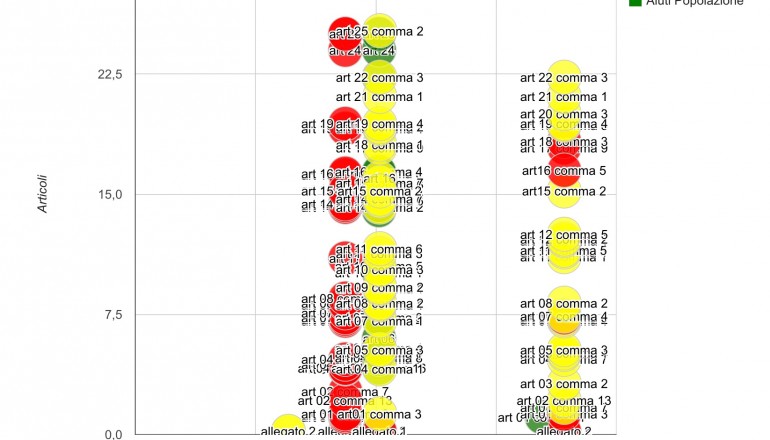
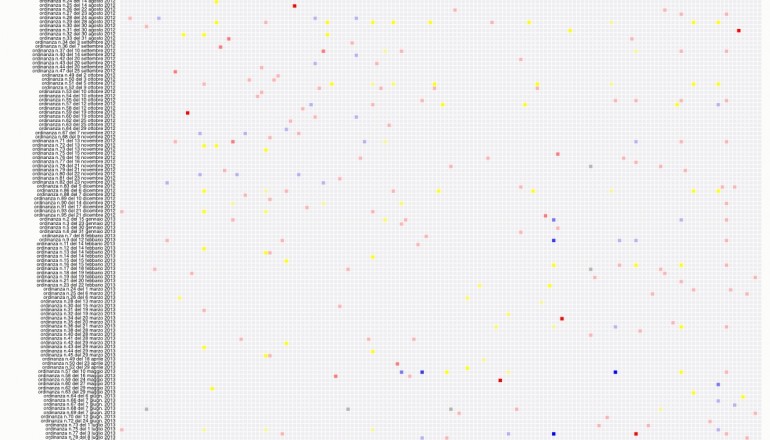
A matrix graph representing the distribution of the different types of modifications over time. We found a concentration of textual modifications, due also to clerical errors, a lack of legislative technique, and template methodology. In the second year we have a concentration of prorogation of terms (blue dots).
Go to results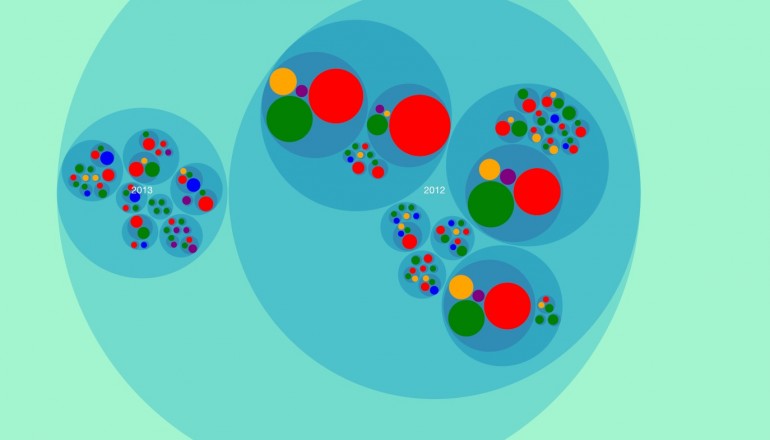
The same information of the above graph described by using a navigable bubble graph that can be used to better analyse the data from a legal point of view.
Go to results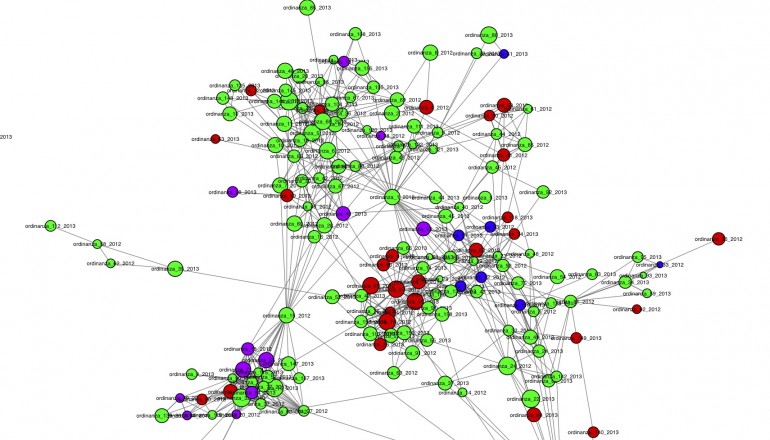
Analysis of the semantic interconnection among ordinances in order assess whether there were critical normative topics that need complex policy by the decision-maker. The following dataset was built using the result of the parser analysis and filtering the normative references excluding the amendment link. The results stressed the presence of four islands that are grouped around a major topic.
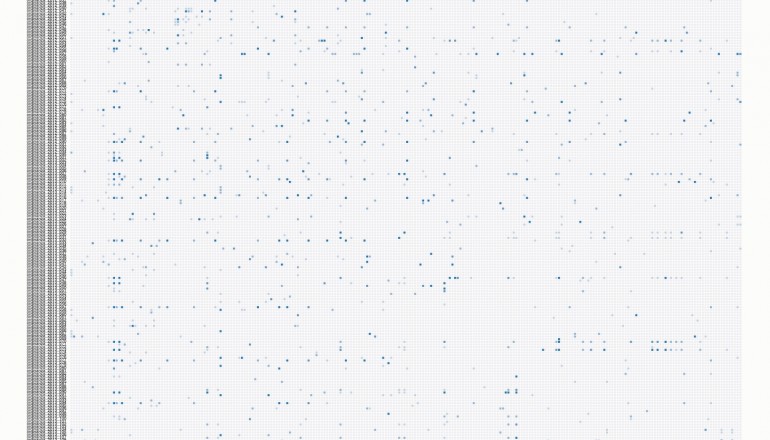

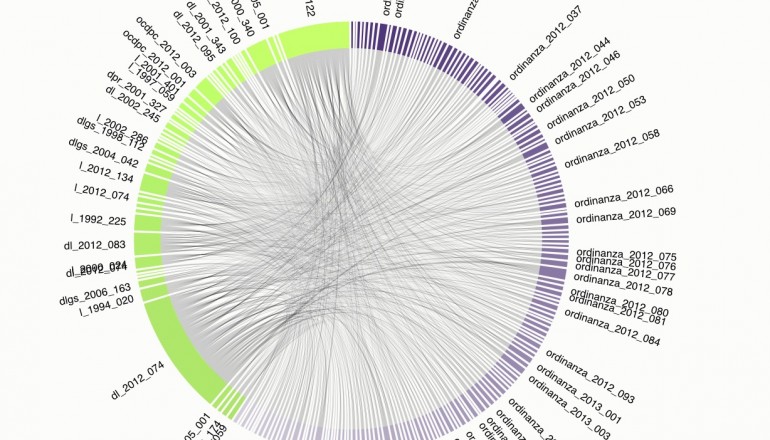
Relationships among regional ordinances and national laws. This contributes to a better understanding of which legislative actions could be useful at the national level to improve the regional legislative activities in emergency settings. The wheel shows that the decree n. 74/2012 is the most cited one. The avarage number of citations from an ordinance to the national law is 31 references.
By continuing to use the site, you agree to the use of cookies. more information
The cookie settings on this website are set to "allow cookies" to give you the best browsing experience possible. If you continue to use this website without changing your cookie settings or you click "Accept" below then you are consenting to this.